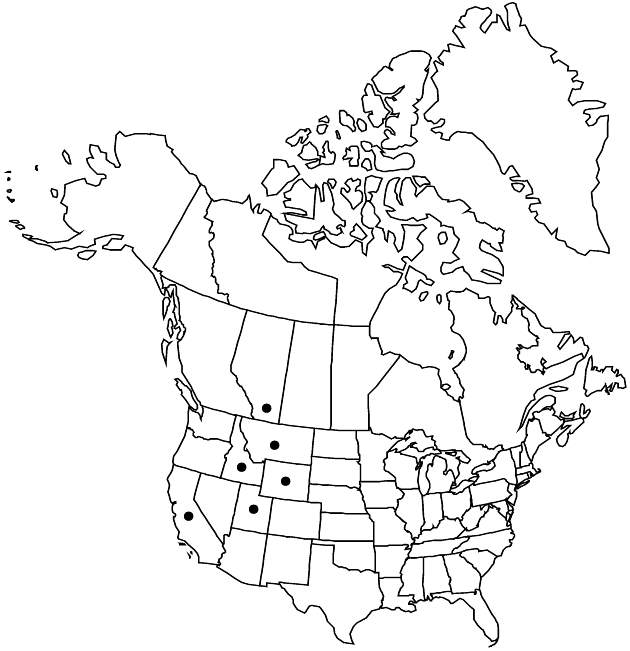Townsendia condensata
Amer. Naturalist 8: 213. 1874.
Perennials, 1–2 cm (usually ± pulvinate). Stems ± erect; internodes 0.1–1(–5+) mm, ± villous. Leaves basal and cauline, ± spatulate, 6–12(–15+) × 1–3+ mm, little, if at all, fleshy or notably thickened, faces of earliest leaves glabrous or glabrate, of later leaves ± villous to pilosulous. Heads ± sessile or at ends of leafy stems. Involucres ± hemispheric, (12–)16–30+ mm diam. Phyllaries 45–60+ in 5+ series, the longer narrowly lanceolate to subulate, 9–11 mm (l/w = 7–9), apices attenuate, abaxial faces ± pilose. Ray florets 21–65+; corollas white adaxially, laminae 8–12(–16+) mm, glandular-puberulent abaxially. Disc florets 100–150+; corollas 4–6+ mm. Cypselae 3–4.5 mm, faces hairy, hair tips entire; pappi readily falling, of 25–30 subulate to setiform scales 5–8 mm (± connate basally).
Phenology: Flowering Jun–Aug.
Habitat: Rocky slopes and talus
Elevation: 3000–3600 m
Distribution

Alta., Calif., Idaho, Mont., Utah, Wyo.
Discussion
The name Townsendia condensata has been attributed to Parry ex D. C. Eaton or to D. C. Eaton. In February 1874 (Amer. Naturalist 8: 106), Parry used T. condensata provisionally and provided a diagnosis. In April that year, he used it as an accepted name and “validated” it by reference to his earlier diagnosis.
Selected References
None.